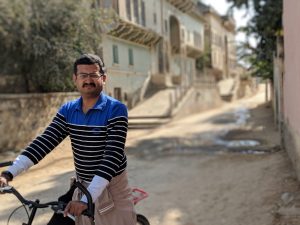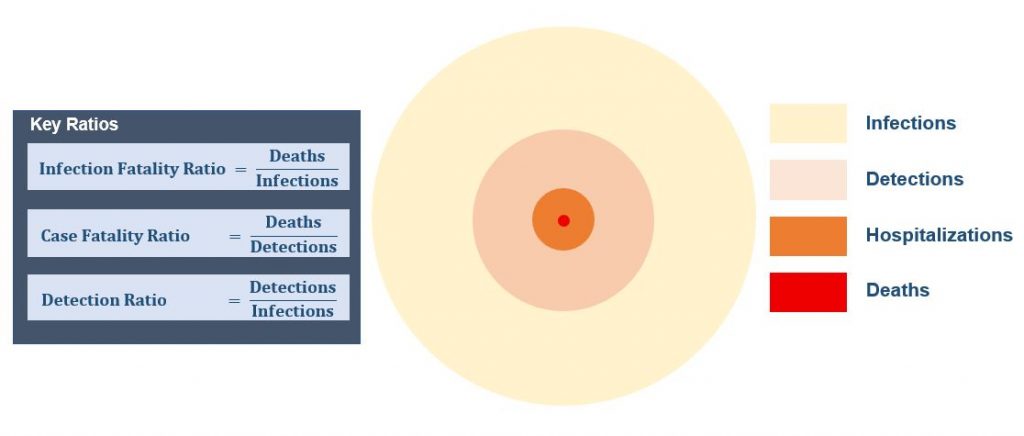Mr Akshay Ravi (PGP 2011) is a part of Areté Advisors, a boutique advisory firm with significant expertise in the Healthcare delivery sector. Joining the war against COVID-19 in the country, he volunteered to work closely with a group of like-minded individuals, with encouragement from the Secy, Electronics and IT, who heads one of the Empowered Groups formed by the MHA. During the last 10 weeks, this core team of volunteers has actively provided inputs to numerous states and Officers and helped in building a shared understanding of the pandemic status across regions and capacity requirements.

The pandemic of COVID-19 has engulfed the entire world, posing serious challenges for the health and economic security of millions of people worldwide. Early on in March, when the total detections were relatively lower in India, the Government initiated steps to understand and manage the COVID-19 situation.
One of the steps undertaken was the creation of 11 Empowered Groups of Officers on 29th March 2020 vide the Ministry of Home Affairs Order No. 40-3/2020-DM-I(A), to synchronise efforts cutting across various Ministries/Departments. These Groups were empowered to identify problem areas and provide effective solutions, therefore delineate policy, formulate plans, strategize operations and take all necessary steps for effective and time-bound implementation of these plans, policies, strategies and decisions in their respective areas.
Around the first week of April, Akshay Ravi got introduced by Mr Ravishankar Iyer (PGP 2005) and Mr Vipul Kedia (PGP 2005) to the Secy, Electronics and IT, Govt of India who heads one of the Empowered Groups.
During the last 10 weeks, the core team, which includes Akshay, has, with the encouragement and feedback of the Secy, been actively involved in providing inputs to various State Governments (4 states on a regular engagement basis) in addition to specific Officers in the Central Government. The team has also been constantly refining their work and inputs based on feedback received from several reputable epidemiologists and scientists in the country. Inputs provided have focused on:
A) Understanding infection spread within the state – estimating likely infections, the subset of detections and transmission rates
B) Modelling likely scenarios for spread within the state – projections from the Group are being actively used for policy making now in at least 3 states
C) Assessing infrastructure requirements (w.r.t. Oxygen beds, ICU beds, Ventilators and Manpower) and thus, likely demand-supply mismatch for key urban centres/districts – 3 states, so far, have initiated ramp-up of bed capacity in line with the Group’s projections
D) Optimally utilizing and scaling testing capacity – determining additional sampling needs for high contact personnel, asymptomatic suspects and high-risk population cohorts by cluster; 3 states have, so far, expanded their testing beyond the suggested symptomatic only testing regime and have been able to lower transmission rates within their state
E) Designing a revamped Monitoring metrics system to move administrations towards higher detections and lower mortality

According to him, “The experience so far has been humbling, challenging and inspirational. I have been pleasantly surprised at the quantum of effort and time put in by various senior officers in trying to understand the nuances of this problem and hence debate potential solutions and scenarios. It has been an immensely gratifying experience in building a better shared understanding of detections versus infections, the importance of monitoring and understanding COVID-19 deaths well and the perils of basing decisions on just detections. For the states which have internalized these concepts well, it has also been heartening to witness the positive impact on the ground through rapid and effective action taken on testing and creation of infrastructure.
The Covid-19 pandemic has posed to be a new challenge, with the world and India also constantly updating its understanding of how the virus behaves. In this context, factoring in the invisible, the asymptomatic, undetected spreaders and balancing the pandemic curve against a region’s health infrastructure and preparedness has been a tight rope act and one of the biggest challenges facing all administrations. There is still a long way to go for the country – there are no easy answers; how we balance the economic versus health trade-offs, the societal versus individual risks, the infrastructure and manpower capacities against stress on the system will define how we come out of this pandemic.”

